The report features how strategic spatial planning can be used to gain new insights of opportunities and constraints for mining-dependent regions and to develop multi-sectoral development plans for resilient and sustainable economies.
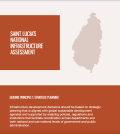
This case study illustrates Guiding Principle 1: Strategic Planning and is part of a series of ten case studies which aim to inform the forthcoming wave of global infrastructure investment. Collectively, they specify and demonstrate how environmental, social and economic sustainability must be integrated right across infrastructure policymaking at the systems-level. The individual principles and case studies were developed via ongoing global consultation and inputs from experts and UN Member States, as part of implementation of the UN Environment Assembly (UNEA) Resolution 4/5 on Sustainable Infrastructure.
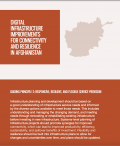
This case study illustrates Guiding Principle 2: Responsive, Resilient, And Flexible Service Provision and is part of a series of ten case studies which aim to inform the forthcoming wave of global infrastructure investment. Collectively, they specify and demonstrate how environmental, social and economic sustainability must be integrated right across infrastructure policymaking at the systems-level. The individual principles and case studies were developed via ongoing global consultation and inputs from experts and UN Member States, as part of implementation of the UN Environment Assembly (UNEA) Resolution 4/5 on Sustainable Infrastructure.
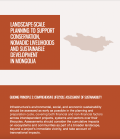
This case study illustrates Guiding Principle 3: Comprehensive Lifecycle Assessment Of Sustainability and is part of a series of ten case studies which aim to inform the forthcoming wave of global infrastructure investment. Collectively, they specify and demonstrate how environmental, social and economic sustainability must be integrated right across infrastructure policymaking at the systems-level. The individual principles and case studies were developed via ongoing global consultation and inputs from experts and UN Member States, as part of implementation of the UN Environment Assembly (UNEA) Resolution 4/5 on Sustainable Infrastructure.

This case study is part of a series that aims to inform the forthcoming wave of global infrastructure investment.
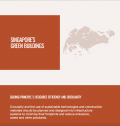
This case study illustrates Guiding Principle 5: Resource Efficiency And Circularity and is part of a series of ten case studies which aim to inform the forthcoming wave of global infrastructure investment. Collectively, they specify and demonstrate how environmental, social and economic sustainability must be integrated right across infrastructure policymaking at the systems-level. The individual principles and case studies were developed via ongoing global consultation and inputs from experts and UN Member States, as part of implementation of the UN Environment Assembly (UNEA) Resolution 4/5 on Sustainable Infrastructure.

Zimbabwe’s social infrastructure services have historically been constrained by persistent energy shortages. Healthcare has been among the systems most affected by this massive power deficit. To help address these issues, in 2017, Zimbabwe began implementing the Solar for Health (S4H) Initiative with the United Nations Development Programme to harness the...
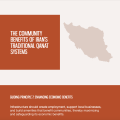
Iran occupies a large expanse of predominantly arid or semi-arid land in West Asia. In this geographic context, qanats – traditional water systems for transporting and distributing water from sources in upland areas to dry plains – have historically provided a solution that sustains livelihoods and economic opportunities.
This case...
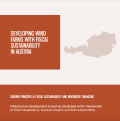
This case study illustrates Guiding Principle 8: Fiscal Sustainability and Innovative Financing and is part of a series of ten case studies which aim to inform the forthcoming wave of global infrastructure investment. Collectively, they specify and demonstrate how environmental, social and economic sustainability must be integrated right across infrastructure policymaking at the systems-level. The individual principles and case studies were developed via ongoing global consultation and inputs from experts and UN Member States, as part of implementation of the UN Environment Assembly (UNEA) Resolution 4/5 on Sustainable Infrastructure.
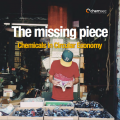
This paper presents case studies of how some of the world’s most well-known brands have set their own internal requirements for chemical contents in their products that go beyond what is required for legal compliance.
